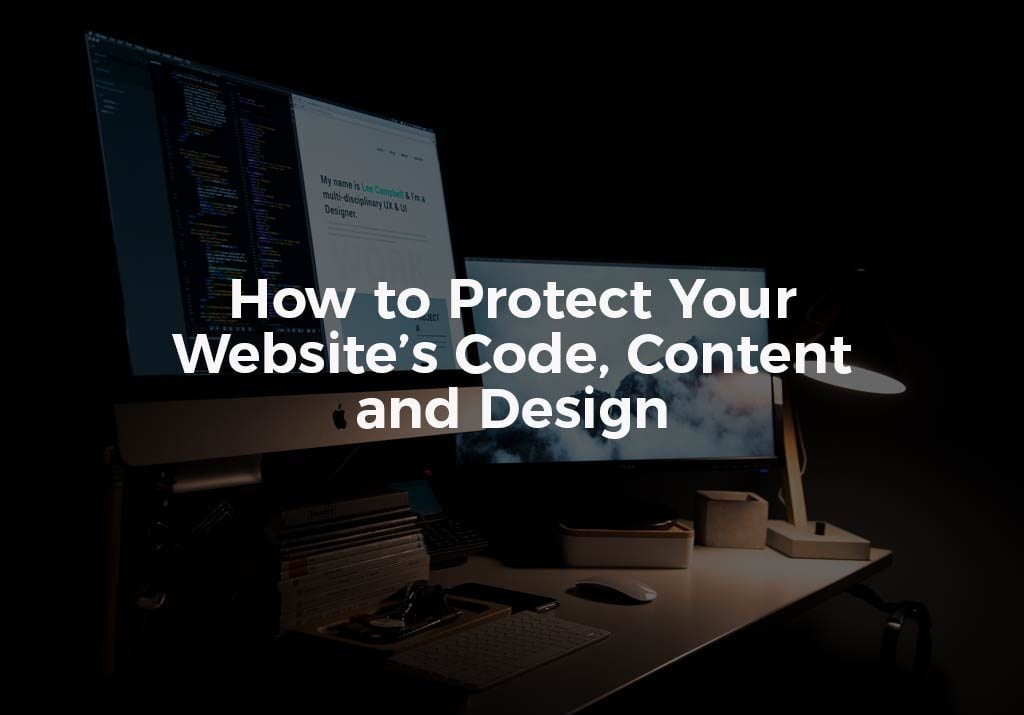In today’s hyper-competitive world of the internet, the last thing you need is someone stealing your website content and design. You’ve put a lot of time and effort into your website, don’t let someone mooch off that by stealing your design, content, or code.
Another website impersonating your business puts both your company and credibility at risk and will cause confusion for your customers.
If you haven’t done so yet, now is the time to protect your website design, code, and its content.
How to Protect Your Website Design, Code and Content
When you create original intellectual or creative property, you are automatically protected under copyright laws at the moment of creation. This protection gives you the exclusive right to transmit, use, or copy your original work.
Although copyright protection exists without registration, the content, code and design of your website must be registered before you can file a copyright infringement case in a US court. Copyright registration also makes it easier to prove ownership of the work and collect damages.
Without public record of ownership (copyright registration), it can be difficult to prosecute offenders and prove infringement. In addition, failing to register may prevent you from receiving statutory damages and attorney’s fees.
You should include the copyright symbol and “all rights reserved” or some other statement of copyright on your website. This puts everyone on notice to not duplicate your creative work.
What You Can’t Protect
If you used a template to create your website, then it will be tough to prove copyright infringement. There will be many, if not thousands, of websites that resemble each other. They will all use the same source code.
You may be able to prove infringement if the offending party copied your logo, trademarks, your copy and pasted our content.
Put Security Measures in Place
A notice on the bottom of your website may stop the honest people, but what about the not so honest? If you have a custom website, talk with your web developer about hiding the source code.
You can also make the content and images on your website protected so they can’t be copied to the clipboard or downloaded. This makes it a bit harder for someone to try and take the fruit of your hard labor.
If you would like additional protection, you can file with the US Copyright office. You need three elements to have an application approved. You need a properly completed application, filing fee, and deposit of work to be protected.
In return, you receive a copyright registration certificate with an official effective date of registration. Now you have an undisputed date or origination if you need to defend your copyright.
Trademark Your Brand
You can protect your logo, name, and combination of words and phrases that distinguish your business. This is done by applying for a trademark.
By having a trademark, you put the public on notice of your ownership. You also have a legal presumption of ownership. This will make it easier to pursue a claim of infringement should someone “borrow” your company name, logo, or slogan. It’s important to consider both US and international trademark protection.
Stay Vigilant
One way to retain the ownership rights of your content is to stay vigilant for anyone that may infringe upon your copyright. Use tools like Copyscape to search the website for duplicate content.
To protect your images, you can use Tineye. This sort of reverse image search tool will trace an image to where it came from. It can also look for modified and higher resolutions versions.
What to Do When Someone Takes Your Content
If you are ok with your material getting used then ask for credit. This can benefit both parties. They get use of the material, and you get brand awareness and a link back to your website.
If you aren’t ok with the material getting used, you should immediately contact an attorney. Let them know that you own the content and provide a link to your website showing when you first posted it.
BE prepared to file a formal complaint. Also called a Digital Millennium Copyright Act complaint. If the offender still doesn’t comply then steps are taken to shut down the offender’s website.
Protect Your Website Today
If you haven’t done so yet, now is the time to start protecting your business and website. Start by filing for a trademark for any distinguishing marks that identify your business. Then place a copyright notice n your website to protect your content.
Remember, you can’t just sit back and assume your good. You need to check for someone infringing on your copyrighted work.
Protect your website today by contacting us to file a copyright registration for your website content.





